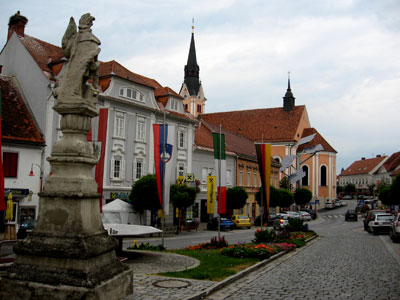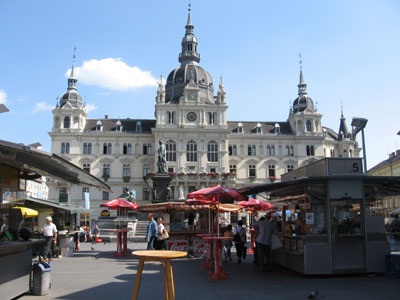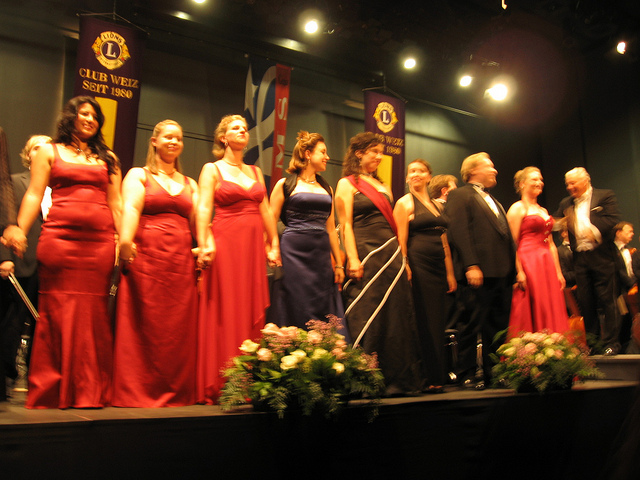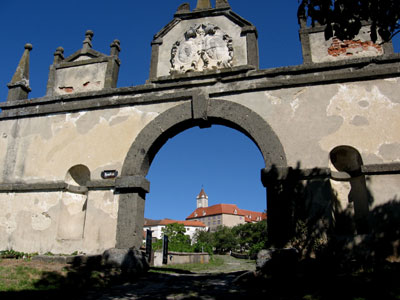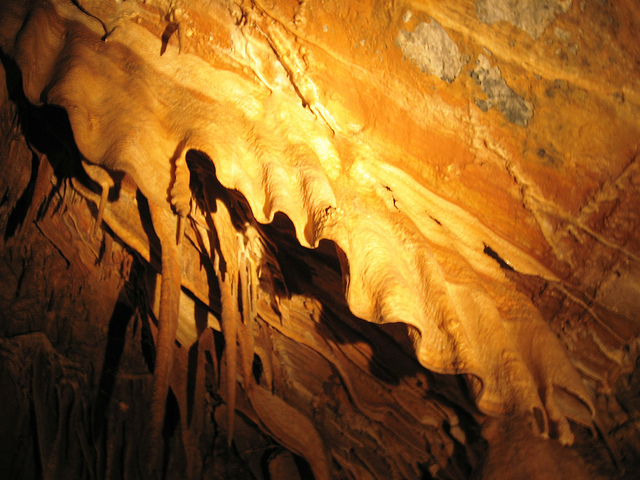In the evening I had a reunion with my brother as well and we started catching up on all the news. Around 11 pm I got a bit tired and jetlag started hitting me so I headed off to bed to rest up for today since we had early plans. Bright and early at 8 am Ewald, Anneliese and I left to do some shopping in the nearby town of Gleisdorf, the second largest town in the district of Weiz. We went for a nice walk with the dog and strolled through the farmer’s market where I admired all sorts of locally grown fruits, vegetables, home-made breads, and a typical Austrian specialty: smoked pork meat.

Delicious Austrian breads
Austria has a long-rooted agricultural tradition, and farming, although only providing about 5% of the employment in the country, is still an important tradition, particularly in the extremely fertile area of Eastern Styria. People go shopping every few days and many of them actually try to buy local produce and meat in the local weekly markets on Wednesdays and Saturdays. Big supermarkets and TV dinners are by far not as popular as in North America, and many people still prepare home-made food from scratch, using and actively seeking out local ingredients. And my brother is a chef, and today was his birthday dinner, so he was on the hunt for some special fresh ingredients.

Colourful peppers
After Gleisdorf we also checked out the farmers market in my hometown of Weiz which was a bit smaller. I took the opportunity to shoot some video clips of the main square of my home town and the surrounding buildings which go back to the 17th century. The old church, the so-called Taborkirche, even dates back to the 1100s, was built in the Romanesque style and is dedicated to St. Thomas of Canterbury. Some ancient Roman gravestones are on display in the church yard, an indication that this area was already settled about two millennia ago by the Romans, and nearby excavations even prove that there was human settlement here in the Pre-Roman times. Other excavations in the province of Styria have unearthed proof that there were human settlements here dating back many tens of thousands of years ago. An area with a lot of history…

Ripe Austrian tomatoes
We had successfully finished our shopping trip and my brother started the cooking while Anneliese and I decided to go on a local hike to the so-called Kleine Raabklamm (Small Raab Gorge) and the Bärental (Bear Valley). Like most of Austria, Eastern Styria with its rolling hills, forests, rivers and brooks is just predestined for hiking, and we enjoyed our 1.5 hour hike from Mitterdorf through the valley of the Raab River. The Raab is a major river in the area that eventually flows into the Danube and into the Black Sea. A beautiful hiking / biking trail took us through forests and lush green meadows to the valley of another tributary – the Bärental, which may indicate that this valley was inhabited at some point by bears.

One of many wayside shrines
The interesting thing about this area is that there are a variety of wayside shrines, and one in particular is supposed to mark the grave site of hundreds of people that died during the late 1400s of the Black Plague. Ever since I was a child, this dark forested area that was supposed to be the final resting place of hundreds of people from more than 500 years ago has fascinated me, and even today visiting this place sent shivers up my spine.

The Main Square of Weiz
Our serene hike continued and shortly after we had reached an elevated ridge on the southwestern side of Weiz from where we had a great view of the entire region. Weiz’ most prominent building is the Weizbergkirche, a baroque church on the Weizberg hill that can be seen for kilometers while the town spreads out in the valley below. The entire scene is framed by an amphitheatre of mountains with an elevation of about 800 to 1000 metres.

Another view of my home town
There was still a bit of time left before our dinner plans, so I hopped into my little rental car for a country driving tour. I went past the village of Gutenberg and the Goller Mountain to the mining village of Arzberg that used to be a location for silver and zinc mining. Today a mining educational trail displaying local minerals and a mining tunnel introduce the public to the mining history of this little town. Arzberg is also one of the entry points to the Raabklamm (the Raab River Gorge), the longest river gorge of Austria. I returned to Weiz via the mountain road on the east side of the river, next to the limestone cliffs of the Gösser mountain.

The old mining town of Arzberg
After a refreshing shower it was time for our small birthday party, and our friends Luis and Isabella had arrived. Together with my brother and sister-in-law this couple had visited us in 2005 and I reported extensively from our Toronto adventures. Anneliese’s niece’s husband and son also joined us and we got ready for a beautiful five-course dinner prepared by my brother Ewald, the expert chef.

Delicious antipasti start off a great meal
Everybody enjoyed the amazing meal and we sat together until about 10:30, laughing, exchanging stories. The little boy and my brother’s dog became friends on the couch and we all had a fabulous time. A long night of discussions until 2:30 am followed since I had to catch up on everything with Ewald. But then it was time to go to sleep since tomorrow (well, actually today), we are planning another hiking trip and I definitely will need to get some rest.
